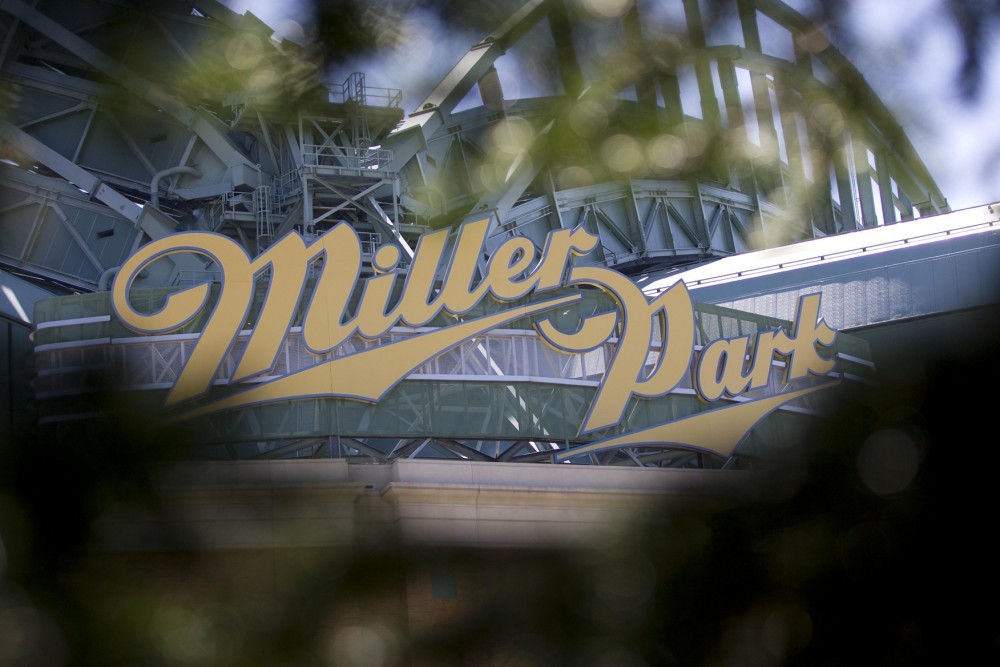The salary arbitration contract tender deadline passed, and the Brewers decided not to tender contracts to Jonathan Schoop, Dan Jennings and Xavier Cedeno. The Schoop decision was the most intriguing and BP Milwaukee analyzed the decision before the it was made. While deciding that Schoop would not justify the potential salary from his arbitration hearing is fair based on his 2017 performance, there’s no doubt that he’d be an undervalued player that Milwaukee would be interested in signing if another organization had made the decision. With that in mind, I wanted to take a look at two pitchers who were non-tendered and may present good buy-low opportunities for Milwaukee.
Mike Fiers
Fiers was non-tendered because Oakland is not paying a mid-rotation starter, at best, a $10 million salary. According to Cot’s Contracts, the last Oakland starting pitcher earning that much money was Scott Kazmir in 2015.
The Brewers immediately come to mind as a home for Fiers because he’s a former Brewer that has survived in MLB despite having below average fastball velocity. His fourseam fastball sits around 90 MPH, which Milwaukee has some experience with. There is ample cause for concern with Fiers though. Last season his swing and miss rate dropped for the fourth straight season, and dipped below 20 percent for the first time in his career. As his whiff percentage has dropped, Fiers has allowed more home runs (ranging from 1.2 to 1.9 per 9 innings) and struck out fewer batters (losing almost two strikeouts per nine innings as there are more strikeouts now than any time in the history of MLB).
However, there may be an area ripe for exploitation which could bring renewed success for Fiers: his curveball. He threw the curve for around 16 percent of his pitches in 2018, which is around his career average. Based on results though, Fiers should be throwing it more. Batters have hit .196 and have slugged .307 against the pitch, both of which are his best numbers. In 2018, those numbers improved to .145 and .181, once again performing as his best pitch results wise. The pitch also generates his most ground balls: over 60 percent of curveballs put in play over his career have been ground balls. His 2018 ground ball rate on curveballs in play was almost exactly his career average.
Fiers consistently buries the ball below the zone and generates a large amount of whiffs on pitches that would be balls. In 2018, almost all of the damage against the pitch was on pitches out of the strike zone, which a player can live with.
For a pitch that he’ll throw equally to lefties and righties, it’s a little baffling that Fiers hasn’t decided to ride the curveball hard as his overall results have gotten worse. His curveball usage was actually down almost 20 percent last season when compared with 2017. Even after the trade to Oakland, while he threw the pitch more, there’s opportunity to make it the focal point of his attack and Milwaukee has some experience in signing free agent pitchers and having them focus on throwing more breaking balls.
Fiers may not be worth $10M, but I think he would be an interesting signing for a team that has helped pitchers maximize their stuff to more fully reach their potential.
Blake Parker
After a season that saw regression across the board, the Angels non-tendered Blake Parker rather than pay his projected $3.1 salary. Superficially, his 3.26 ERA and career high 14 saves indicate a decent reliever. Digging a little deeper reveals some problems, though:
| H/9 | BB/9 | HR/9 | GB% | BABIP | DRA | Whiff % | |
| 2017 | 5.3 | 2.1 | 0.9 | 48% | .229 | 2.26 | 31.9% |
| 2018 | 8.5 | 2.6 | 1.6 | 35% | .297 | 5.19 | 25.3% |
Most of Parker’s regression is found in performance against his fastball. In 2017, batters hit .179 and slugged .313 against his fastball, with a .204 BABIP, but those numbers rose to .315, .562 and .328 in 2018. Batters hit more home runs against his fastball in 2018 (10) than he allowed in total in 2017 (7).
After spiking in 2017, Parker’s fastball velocity fell from 94 to 92.8 last season. The pitch started the season slower and the velocity continued trending down. He also had a location issue. Parker had previously located the pitch away from both righties and lefties, generally avoiding the middle of the plate and looking to jam hitters as much as possible. That plan failed against both sides as Parker literally had a Rudolph nose in his fastball strike zone plot. While the velocity may not come back, better location can cure a lot of Parker’s ills as batters did the most damage against his poorly located pitches.
Parker also has potential with his other two pitches: the curveball and splitter. The curveball used to be his secondary pitch, but he shelved in it favor of his splitter in 2017. Parker brought the pitch back towards the end of the season. His whiffs on both pitches were down in 2018 and location may have played a role here as well. In his most effective season, Parker threw almost 62 percent of his curves and splitters below the zone, which dropped to 56 percent in 2018. In particular, he consistently missed that spot against left handed hitters. His whiff numbers on those pitches compare favorably in 2017 and 2018, but because he was missing his spot more, batters made more contact.
Aside from the velocity drop, Parker also just didn’t execute his pitches in 2018. If the Brewers think there’s an easy mechanical fix, then Parker is a potential cheap addition to Milwaukee’s monster bullpen.
Note: Projected arbitration salaries are from MLB Trade Rumors.
